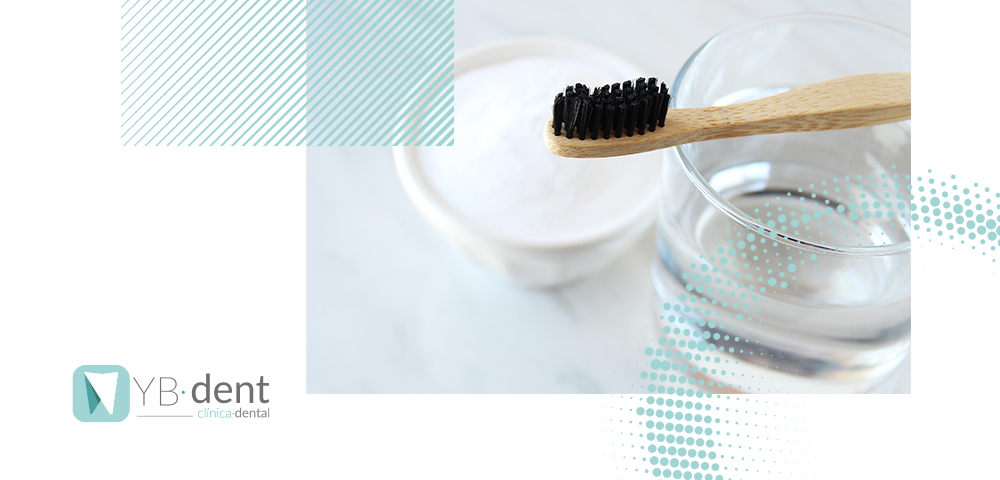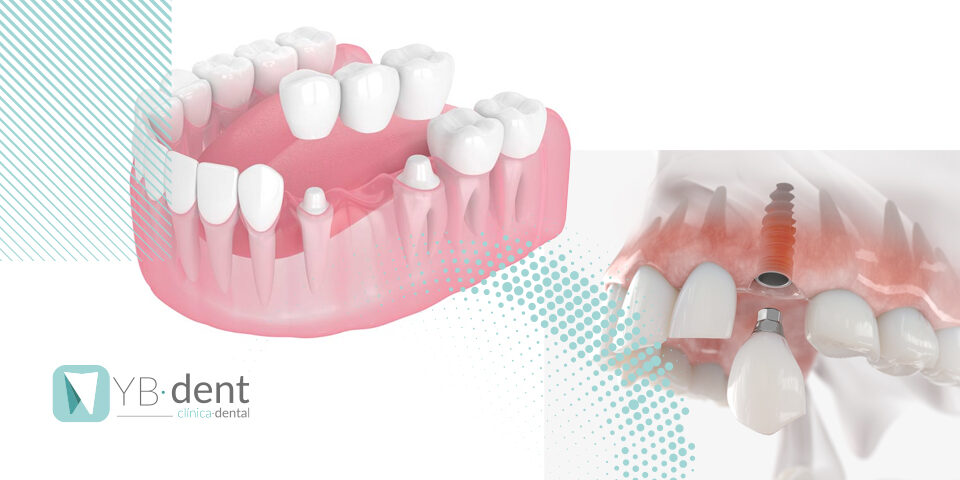¿El bicarbonato de sodio blanquea los dientes?

El bicarbonato de sodio tiene diversos usos domésticos pero desde hace un tiempo se lleva utilizando también como limpiador y blanqueador de dientes. Existen muchas teorías con este tema y muchas personas dicen que si que es conveniente y otras dicen que no. Hoy en YBdent intentaremos sacarte de dudas y resolver la cuestión que tanta gente se pregunta. De verdad ¿es bueno lavarse los dientes con bicarbonato de sodio? y ¿te blanquea los dientes el bicarbonato de sodio?
La verdad es que para la limpieza de los dientes si que funciona, sin embargo no protege tan bien de las caries como una pasta de dientes común con flúor. Existen diversas ventajas y desventajas que te exponemos ahora. De esta forma podrás decidir por ti mismo si te compensa lavarte los dientes con bicarbonato de sodio.
Ventajas de lavarse los dientes con bicarbonato de sodio
Blanquea los dientes
Es cierto que el bicarbonato tiene propiedades naturales que blanquean los dientes y se ha demostrado que es un abrasivo suave que elimina las manchas exteriores de los dientes y que blanquea tu sonrisa. Por esta razón muchas de las pastas de dientes contienen bicarbonato de sodio ya que es una manera eficaz de eliminar algunas manchas de dientes.
Puede reducir las bacterias
Las bacterias dañinas necesitan condiciones ácidas para sobrevivir y actuar en la boca por lo que cuando te enjuagas la boca con bicarbonato y agua juntos, el pH de la boca aumenta haciéndose así más ácida. En definitiva, el bicarbonato como pasta de dientes puede dificultar que se multipliquen las bacterias que causan dichas caries por lo cual es beneficioso para reducir estas bacterias.
Disminuye la placa y la gingivitis
Las biopelículas son colonias bacterianas que se adhieren a la superficie de los dientes y pueden causar problemas como gingivitis y caries. La placa dental es un ejemplo de biopelícula dental. Al cepillarse los dientes, las partículas de bicarbonato de sodio destruirán la biopelícula, reducirán la cantidad de bacterias y ayudarán a prevenir daños en los dientes y las encías.
Después de saber las ventajas es importante saber cuales son las desventajas de utilizar bicarbonato para los dientes.
Desventajas del bicarbonato de sodio en los dientes
Blanqueamiento ligero
Como hemos comentado antes, el bicarbonato de sodio es un abrasivo suave por lo que no se asegura en su totalidad que tus dientes se vayan a ver más blancos y que tus manchas vayan a desaparecer. Algunos investigadores le dan una puntuación baja como blanqueador de dientes ya que hay otros productos que dicen que funcionan mejor y son más eficaces a la hora de eliminar las manchas de tus dientes.
Por lo tanto, prueba el bicarbonato de sodio y si observas que no te está funcionando bien como blanqueador de dientes, puedes intentarlo con otros productos que por ejemplo lleven peróxido de hidrógeno o microperlas abrasivas.
Carencia de flúor
La pasta de dientes contiene flúor para prevenir la caries dental. A pesar de que el flúor es un elemento natural abundante en el agua y el aire, y está presente en nuestros huesos y dientes, el flúor en la pasta de dientes puede proporcionar una protección adicional contra las caries.
El uso de bicarbonato de sodio como única pasta de dientes no proporcionará el fluoruro presente en muchas pastas de dientes comerciales. Como resultado, usar solo bicarbonato de sodio puede no brindar la protección necesaria contra la caries dental.
Sabor y textura poco atractivos
A muchas personas el sabor del bicarbonato de sodio no les gusta para nada y además la textura es como si tuvieras arena en la boca. Esto puede ser una desventaja para muchas personas sin embargo esto solo pasa si utilizas un componente puro. Si utilizas alguna pasta dental de las que se comercializan con el ingrediente de bicarbonato el sabor y la textura prácticamente ni la notarás. Por otro lado, si quieres utilizarlo puro puedes agregarle algunas gotas de aceite de menta para así realzar el sabor de la menta y que no te moleste tanto su sabor.
En conclusión, al cepillarte los dientes con bicarbonato de sodio si que puedes deshacerte de manchas externas y aclarar el esmalte pero sólo podrás hacerlo un poco. Para esto es mucho más eficaz y conveniente hacer un tratamiento con un profesional dentista ya que el efecto es casi inmediato. Es mucho más eficiente y tu dentista podrá estudiar si es una buena opción para tus dientes. En nuestra clínica dental YBdent disponemos de el blanqueamiento en clínica en una sola sesión con efectos inmediatos, y blanqueamiento domiciliario que se realiza mediante férulas simplemente aplicando un gel cómodamente en casa. Además, nuestro tratamiento blanqueador no implica desgaste ni dolor alguno.
¡Ven a YBdent y consigue tu sonrisa perfecta! ¡Adiós manchas y color amarillo!



